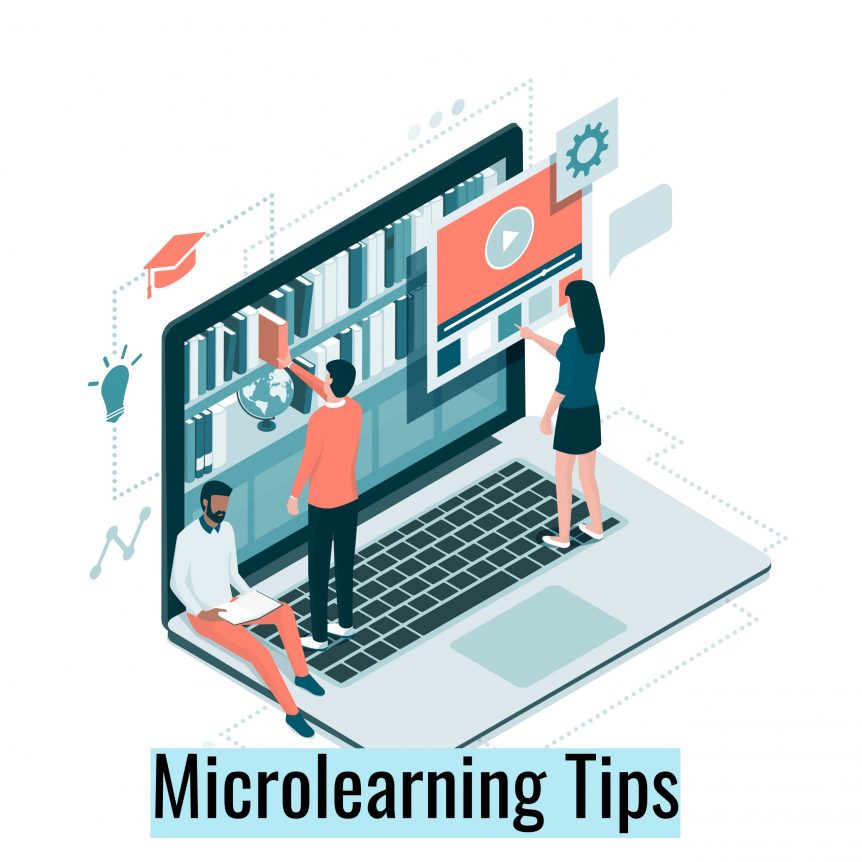14 Microlearning Tips to Enhance Your Training Content
Microlearning involves creating training content focused on a single topic that can be covered in an e-learning module in a short space of time – usually less than 10 minutes. It differs from other forms of e-learning which cover broader topic areas.
Microlearning offers a range of benefits including:
- Empowering learners and involving them more in their professional development
- Removes barriers to learning, particularly time barriers
- Improves retention rates
- Is easy to distribute
- Has high levels of engagement
- Is a cost-effective training delivery method
To maximise the above benefits, you need to make sure your microlearning content is as good as possible. Here are our top tips.
1. Know Your Learners
As with other forms of training, an essential first step is to ensure you understand your learners. This includes understanding their current competency levels as well as things like their willingness to use technology.
2. Make Sure Microlearning is the Right Strategy
While microlearning can be a powerful training strategy, it isn’t suitable in all situations. There will be some topics where a traditional e-learning course will be more effective while you might decide for other courses that a blended learning strategy is the best approach.
3. Optimise for Mobile Devices First
Mobile phones are the perfect device for completing a microlearning course. They are convenient, your team knows how to use them, and most people keep their phones with them most of the time.
The best approach when designing any type of e-learning content, including microlearning, is to make the content responsive so it works and looks good on all devices. Designing for mobile first, however, is recommended.
4. Combine Microlearning and Just-in-Time Learning
Just-in-time learning is where you create a library of e-learning content that your team can complete whenever they want to. It is an effective strategy for many topic areas as learners are more likely to complete the training when they need it most. This ensures high levels of motivation and engagement.
Microlearning fits perfectly with a just-in-time training approach as learners can get the information they need quickly and with minimal distractions.
5. Focus on Improving Skills Levels, Not Just Knowledge
Given the fact microlearning courses are shorter than other forms of training, it’s important to ensure they are highly focused on achieving your goals. In most situations, the goal of training is to change or improve behaviours, i.e. make employees proficient in the use of a software application, improve customer service levels, increase sales, reduce accident rates, etc.
So, while knowledge is important, what you really want to achieve with microlearning is behavioural change that will benefit your organisation. This means focusing on skills, not just knowledge.
6. Stay Rigidly to the Topic
A key component of microlearning is that it covers a single topic. Don’t deviate from this.
7. Include Realistic and Relevant Examples, Stories, and Scenarios
You have a short period of time to engage and train learners with microlearning, so make every section count. For stories, examples, and scenarios, this means making them as relevant and familiar to the learner as possible.
8. Personalise the Training as Much as Possible
You may need the help of a professional e-learning developer in Saudi Arabia or the UAE for this tip. Still, your microlearning content will be substantially improved if it is personalised for learners. The deeper the personalisation, the greater the benefit.
9. Make Use of Micro-Interactions
A lot of e-learning and microlearning content requires learners to digest information on a screen and then swipe or tap a button to move to the next screen. This is repetitive and uninspiring.
Instead, you should include as many micro-interactions as possible, where learners physically engage with the content on the screen by answering questions, making decisions, tapping to reveal information, and more.
10. Include Video, Images, and Other Visuals
Visuals work on all e-learning courses, and microlearning modules are no different. Just make sure the visuals and videos are on-topic and succinct.
11. Add Social Elements
Adding social elements to microlearning courses can be beneficial too, as it makes the experience more engaging for learners. It can also be motivational. For example, giving learners the option of sharing the fact they have completed a training milestone or a result they achieved on a quiz can lead to encouraging comments and reactions from their colleagues.
12. Provide Additional Resources
Some learners may want to go into the topic in more depth than microlearning allows, or they may want to broaden their knowledge and skills. So, where possible, provide resources where the learner can access additional content.
13. Maintain Quality Standards
Microlearning content is short, but that doesn’t mean compromising on quality. It’s the opposite, in fact – the quality of your microlearning courses should be as good as possible.
14. Make the Content Interesting and Fun
Finally, it’s important to add elements to your microlearning courses to improve engagement and learner satisfaction rates. The fact you are using microlearning will help, but you should also strive to make the content as interesting and fun as possible.
Getting Started with Microlearning
Microlearning is unlikely to be the solution to all your training requirements, but it can be an important and valuable part of your strategy. It will deliver a return on investment, and, crucially, help you raise skills levels across your organisation.
